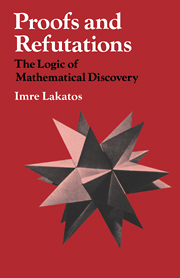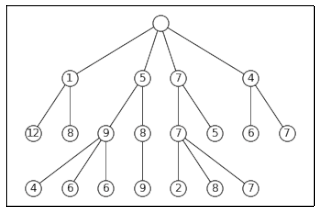
Argument from ignorance, also known as appeal to ignorance, is a fallacy in informal logic. It asserts that a proposition is true because it has not yet been proven false or a proposition is false because it has not yet been proven true. This represents a type of false dichotomy in that it excludes the possibility that there may have been an insufficient investigation to prove that the proposition is either true or false. It also does not allow for the possibility that the answer is unknowable, only knowable in the future, or neither completely true nor completely false. In debates, appealing to ignorance is sometimes an attempt to shift the burden of proof. The term was likely coined by philosopher John Locke in the late 17th century.
Usability testing is a technique used in user-centered interaction design to evaluate a product by testing it on users. This can be seen as an irreplaceable usability practice, since it gives direct input on how real users use the system. It is more concerned with the design intuitiveness of the product and tested with users who have no prior exposure to it. Such testing is paramount to the success of an end product as a fully functioning application that creates confusion amongst its users will not last for long. This is in contrast with usability inspection methods where experts use different methods to evaluate a user interface without involving users.
A heuristic, or heuristic technique, is any approach to problem solving that employs a practical method that is not fully optimized, perfected, or rationalized, but is nevertheless sufficient for reaching an immediate, short-term goal or approximation. Where finding an optimal solution is impossible or impractical, heuristic methods can be used to speed up the process of finding a satisfactory solution. Heuristics can be mental shortcuts that ease the cognitive load of making a decision.

A mathematical proof is a deductive argument for a mathematical statement, showing that the stated assumptions logically guarantee the conclusion. The argument may use other previously established statements, such as theorems; but every proof can, in principle, be constructed using only certain basic or original assumptions known as axioms, along with the accepted rules of inference. Proofs are examples of exhaustive deductive reasoning which establish logical certainty, to be distinguished from empirical arguments or non-exhaustive inductive reasoning which establish "reasonable expectation". Presenting many cases in which the statement holds is not enough for a proof, which must demonstrate that the statement is true in all possible cases. A proposition that has not been proved but is believed to be true is known as a conjecture, or a hypothesis if frequently used as an assumption for further mathematical work.
The Method of Mechanical Theorems, also referred to as The Method, is one of the major surviving works of the ancient Greek polymath Archimedes. The Method takes the form of a letter from Archimedes to Eratosthenes, the chief librarian at the Library of Alexandria, and contains the first attested explicit use of indivisibles. The work was originally thought to be lost, but in 1906 was rediscovered in the celebrated Archimedes Palimpsest. The palimpsest includes Archimedes' account of the "mechanical method", so called because it relies on the center of weights of figures (centroid) and the law of the lever, which were demonstrated by Archimedes in On the Equilibrium of Planes.
The Analyst is a book by George Berkeley. It was first published in 1734, first by J. Tonson (London), then by S. Fuller (Dublin). The "infidel mathematician" is believed to have been Edmond Halley, though others have speculated Sir Isaac Newton was intended.
A heuristic evaluation is a usability inspection method for computer software that helps to identify usability problems in the user interface design. It specifically involves evaluators examining the interface and judging its compliance with recognized usability principles. These evaluation methods are now widely taught and practiced in the new media sector, where user interfaces are often designed in a short space of time on a budget that may restrict the amount of money available to provide for other types of interface testing.
The availability heuristic, also known as availability bias, is a mental shortcut that relies on immediate examples that come to a given person's mind when evaluating a specific topic, concept, method, or decision. This heuristic, operating on the notion that, if something can be recalled, it must be important, or at least more important than alternative solutions not as readily recalled, is inherently biased toward recently acquired information.
Branch and bound is a method for solving optimization problems by breaking them down into smaller sub-problems and using a bounding function to eliminate sub-problems that cannot contain the optimal solution. It is an algorithm design paradigm for discrete and combinatorial optimization problems, as well as mathematical optimization. A branch-and-bound algorithm consists of a systematic enumeration of candidate solutions by means of state space search: the set of candidate solutions is thought of as forming a rooted tree with the full set at the root. The algorithm explores branches of this tree, which represent subsets of the solution set. Before enumerating the candidate solutions of a branch, the branch is checked against upper and lower estimated bounds on the optimal solution, and is discarded if it cannot produce a better solution than the best one found so far by the algorithm.
Anecdotal evidence is evidence based only on personal observation, collected in a casual or non-systematic manner.
Rigour or rigor describes a condition of stiffness or strictness. These constraints may be environmentally imposed, such as "the rigours of famine"; logically imposed, such as mathematical proofs which must maintain consistent answers; or socially imposed, such as the process of defining ethics and law.

Proofs and Refutations: The Logic of Mathematical Discovery is a 1976 book by philosopher Imre Lakatos expounding his view of the progress of mathematics. The book is written as a series of Socratic dialogues involving a group of students who debate the proof of the Euler characteristic defined for the polyhedron. A central theme is that definitions are not carved in stone, but often have to be patched up in the light of later insights, in particular failed proofs. This gives mathematics a somewhat experimental flavour. At the end of the Introduction, Lakatos explains that his purpose is to challenge formalism in mathematics, and to show that informal mathematics grows by a logic of "proofs and refutations".

In computer science, beam search is a heuristic search algorithm that explores a graph by expanding the most promising node in a limited set. Beam search is an modification of best-first search that reduces its memory requirements. Best-first search is a graph search which orders all partial solutions (states) according to some heuristic. But in beam search, only a predetermined number of best partial solutions are kept as candidates. It is thus a greedy algorithm.
A computer-assisted proof is a mathematical proof that has been at least partially generated by computer.
Logic optimization is a process of finding an equivalent representation of the specified logic circuit under one or more specified constraints. This process is a part of a logic synthesis applied in digital electronics and integrated circuit design.
In mathematical optimization and computer science, heuristic is a technique designed for problem solving more quickly when classic methods are too slow for finding an exact or approximate solution, or when classic methods fail to find any exact solution in a search space. This is achieved by trading optimality, completeness, accuracy, or precision for speed. In a way, it can be considered a shortcut.
A heuristic is a kind of method for solving a problem.
In mathematics, the Goldbach–Euler theorem (also known as Goldbach's theorem), states that the sum of 1/(p − 1) over the set of perfect powers p, excluding 1 and omitting repetitions, converges to 1:
In the history of mathematics, the principle of permanence, or law of the permanence of equivalent forms, was the idea that algebraic operations like addition and multiplication should behave consistently in every number system, especially when developing extensions to established number systems.
In the history of mathematics, the generality of algebra was a phrase used by Augustin-Louis Cauchy to describe a method of argument that was used in the 18th century by mathematicians such as Leonhard Euler and Joseph-Louis Lagrange, particularly in manipulating infinite series. According to Koetsier, the generality of algebra principle assumed, roughly, that the algebraic rules that hold for a certain class of expressions can be extended to hold more generally on a larger class of objects, even if the rules are no longer obviously valid. As a consequence, 18th century mathematicians believed that they could derive meaningful results by applying the usual rules of algebra and calculus that hold for finite expansions even when manipulating infinite expansions.



